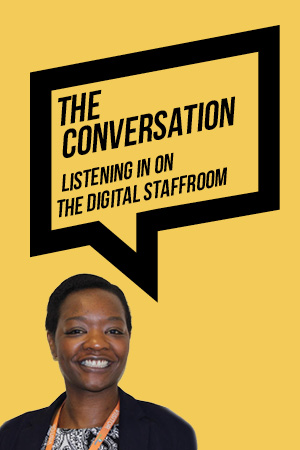At the height of Building Schools for the Future, there were many claims about the “transformation” of learning and a tendency to assume that better, newer buildings would inevitably lead to higher student achievement. It was seldom questioned how this impact might be expected to come about.
In fact, rather disquietingly, the research evidence suggests that direct impact on learning outcomes is more likely to take the form of detrimental effects caused by really poor premises. Noise and low air quality appear to be particular problems. Once basic standards are met, it is far from clear how changing or redesigning a school building will produce improved learning and enhance attainment. If the effect is not directly on mental processes, then better learning must require a change in approaches to learning, presumably through changed teaching practices.
Alterations to the physical environment may prompt or promote such change, even if that is not an inevitable outcome. If the key to improved education is changing what happens in schools, then the question is whether and how school space can support or even drive changes to approaches, activities and practices. Although the history of education is littered with examples of changes to physical school environments that have not produced changes in teaching and learning, my observations suggest that such productive use of the environment can and does occur. This is seen in small-scale alterations, such as when teachers rearrange the furniture in their classroom to enable access to resources to support more autonomous learning, but also in larger-scale rebuilding where organisational decisions are embodied in use of space for specific subjects or ways of teaching.
It was the evaluation of a multi-strand programme intended to change pedagogy and curriculum in primary schools that provided a key opportunity for me to observe this process in action and to consider the features that produced success.
Open Futures is a skills and enquiry-based learning programme (openfutures.com) of four integrated strands: growit; cookit; filmit and askit (philosophy for children). Our evaluation of 2011-2013 focused on seven of the 13 primary schools that started the programme in 2011, with two schools from a previous wave that had completed the training some years before.
To start we observed initial physical, organisational and curricular changes that produced an immediate impact: raised beds for gardening and space for cooking; training that staff appreciated, students engaged by new, hands-on activities. But then we were impressed how these changes became established, perhaps being further developed, embedding Open Futures activities in the life of the school. School leaders described a cyclical process, mini-cycles of change, where Open Futures enabled better learning processes and teaching practices to continue to develop. A changing school culture underpinned alterations within curriculum, organisation and space, but, also, crucially, to the way these elements of the school cohered and mutually supported each other.
The centrality of the physical environment is notable through the stages of development. The programme had some clear initial requirements for physical changes to be made, most specifically for the growit and cookit strands. Once complete these new spaces facilitate the early curricular and pedagogic developments, but also enable progress towards further integration within the strands and with the existing curriculum. They also provide a tangible reminder of new intentions and values. As the headteacher of a school that had been recruited in an earlier wave of Open Futures summed up their sustained involvement:
“If you’ve got that infrastructure, you can use it . . . and you want to use it, don’t you?”
The use made of school space by Open Futures offers a demonstration of concept: physical environments certainly do support specific practices and so can be powerful levers in educational change. But to be successful, physical changes seem to require interdependent developments of school organisation and culture.
I’m beginning to understand that spatial initiatives need to be intimately connected to organisational and social processes. Further research can help us learn how to enact educational change so that improved learning and teaching are embedded, supported and developed through physical space.












Yet again the peddling of the myth that the BSF programme was purely about the building. Anyone involved with BSF can tell you that its transformation programme involved a raft of other approaches concerned with both pedagogies and organisational shifts, developed bottom up by groups from the schools.
I remember one head, after an NCSL BSF event, saying ‘actually more than 50% of what we have come up with we don’t need a new building to implement’. And some went off and started the transformation anyway, using existing spaces.
Whatever the Gove spin, BSF was about transforming education, not extremely expensive buildings!
You’re quite right, Tony, that BSF (unlike the current Priority School Building Programme) was about much more than the building … and that is why BSF builds/refurbishments might be expected to have an impact on education. However, the coverage of BSF, and in fact many of the government’s pronouncements at the time, was much more simplistically about new buildings. My point was that expecting a new building in isolation to change everything is naïve, but as part of a complex process, linked to other changes, the school space can be very powerful.